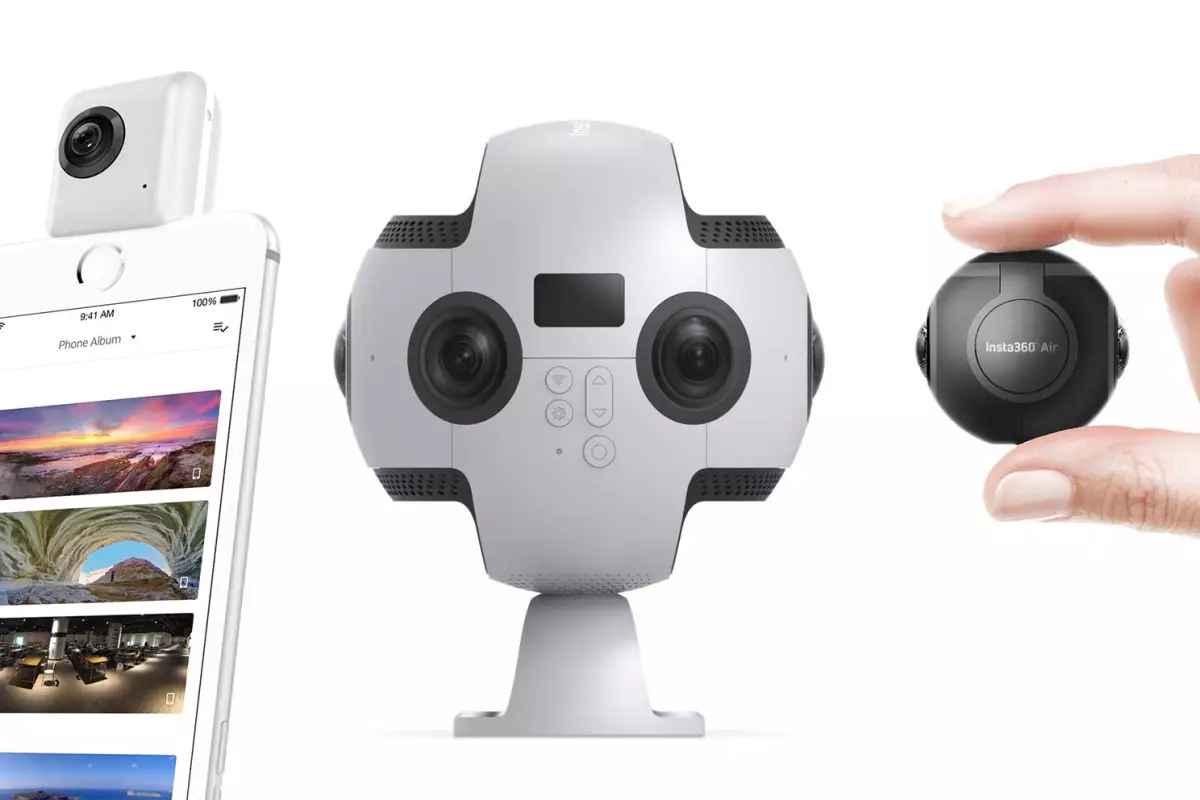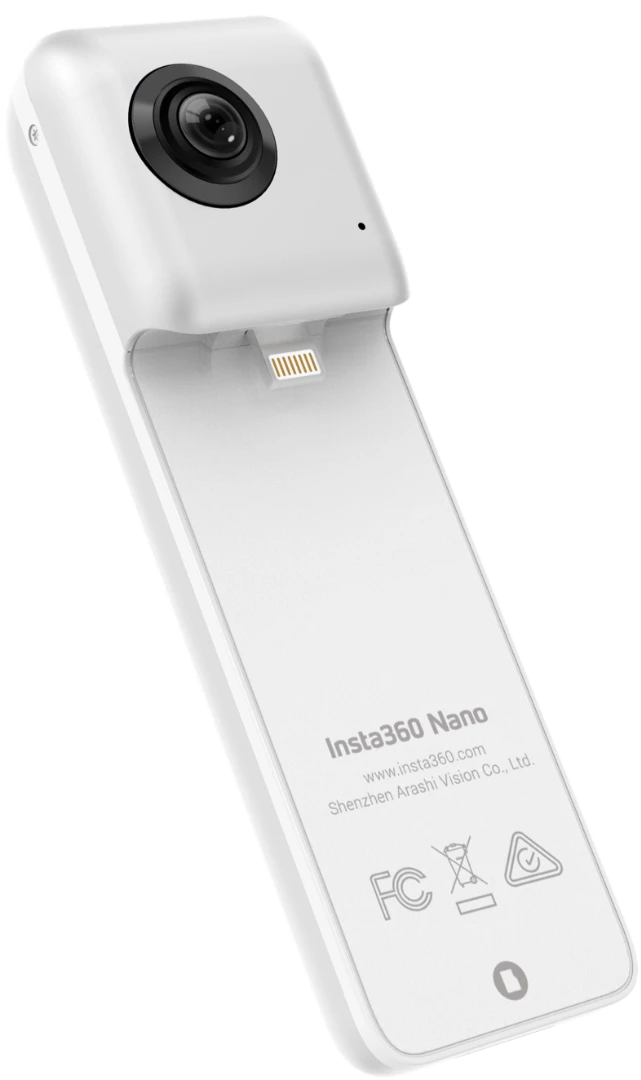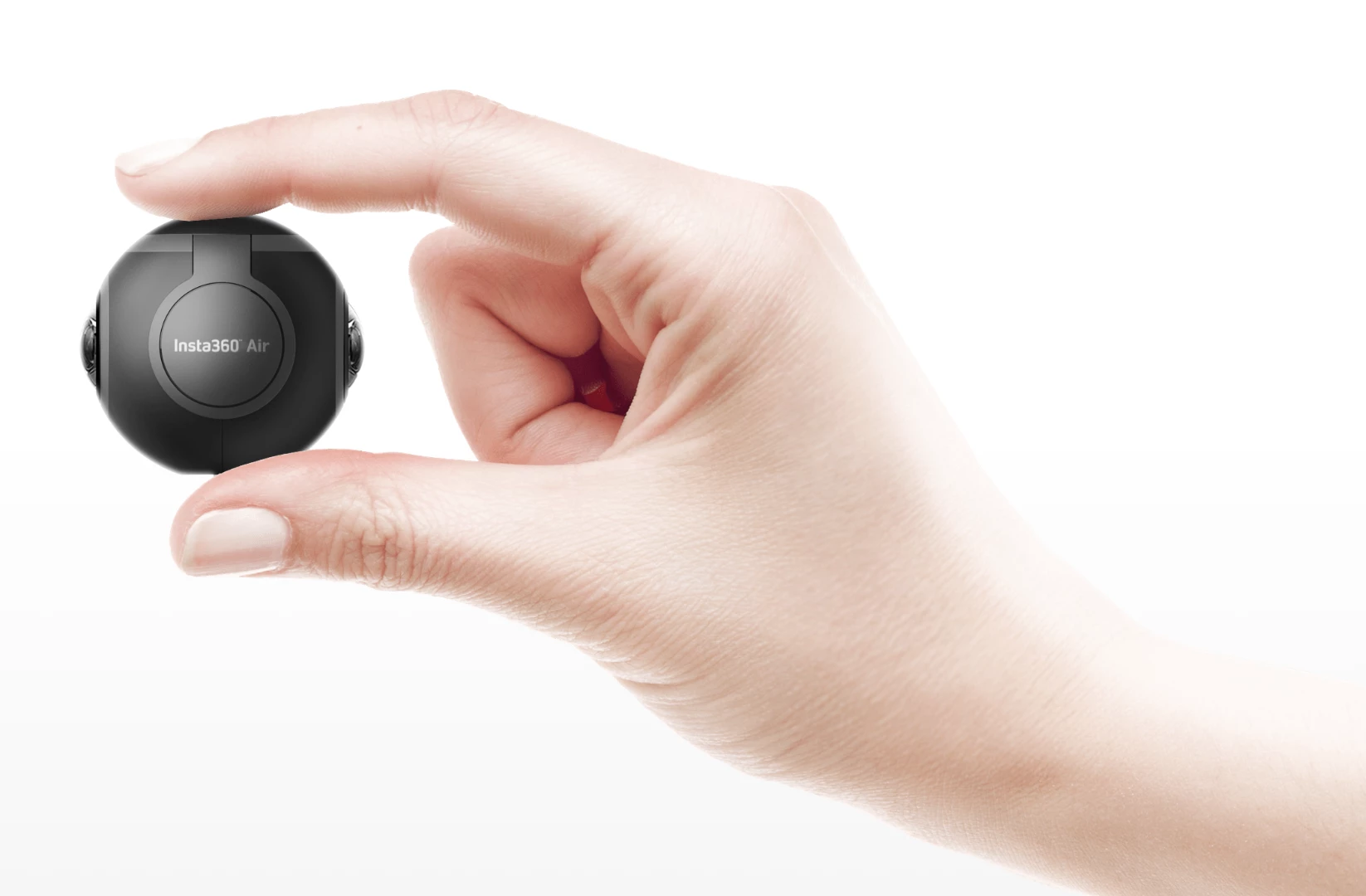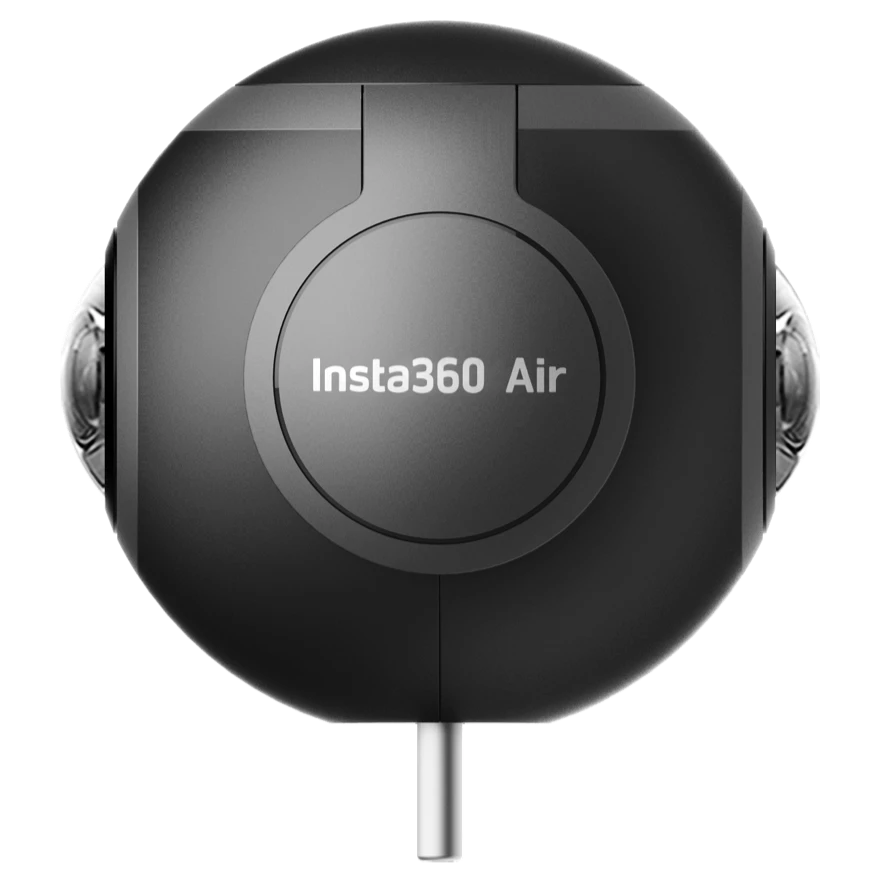Insta360's affordable Nano and Air cameras clip onto smartphones to live stream and record panoramic 360-degree video. But it's the Pro we like the look of. It packs in six cameras, image stabilization and a whopping 8K resolution at 30 frames per second (fps) output.
A raft of consumer-grade 360-degree camera options are beginning to flood the market as VR headsets and simple strap-your-phone-to-your-face viewers become more common. Efforts from Ricoh, Kodak, 360Fly, Sphericam, CENTR and many others offer relatively cheap ways of getting in on the action, most producing 360-degree imagery in 4K resolution, and some offering high frame rate capture for better immersion in a headset.
Insta360 has come out hard with a trio of 360-degree cameras, two of which mount straight to smartphones for instant on-the-go editing and livestreaming, and the third of which is a pro-grade machine that shoots in 8K, or 6K for panoramic 3D vision.

Insta360 Air (for Android)
The Air model is a ball-shaped unit that clips straight onto an Android phone at the USB port. Its front and rear lenses each have a widest aperture of f/2.4, and it offers a maximum still image resolution of 3008 x 1504 (3K) and can capture video at 2560 x 1280 and 30 fps.
Through the Insta360 app, it allows one-touch sharing of photos and videos, as well as livestreaming through Facebook, Instagram and YouTube. At just 26.5 g (0.9 oz), it's also light enough to sit on the end of a flexible USB cord and operate as a panoramic meeting camera that can catch everyone around the table and broadcast them on a Skype call.
At a retail price of US$119, it's one of the cheapest ways to get into 360 video.
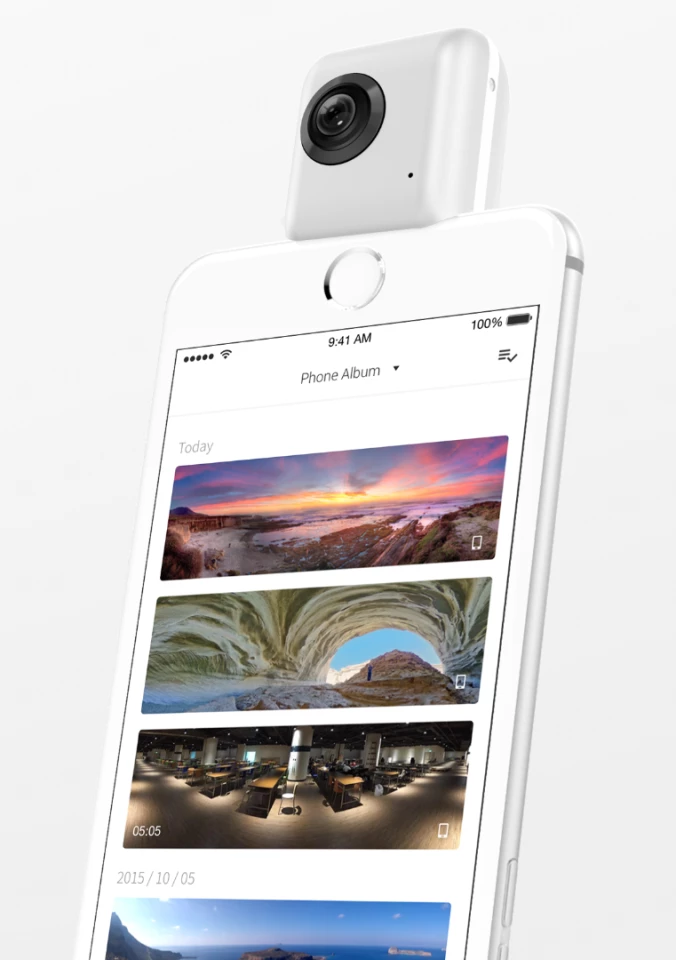
Insta360 Nano (for iPhone 6 and higher)
Things go up a step in terms of build quality for the iPhone version, with "premium materials" and a sexy box that converts into a phone VR viewer. The Nano uses a Lightning connector to clip onto an iPhone and deliver similar functionality to the Air, with the addition of a TF card slot and built-in 800-mAh battery.
The iPhone app lets you shoot and stream at resolutions up to 3040 x 1520, slightly higher than 3K, and in addition to Facebook, Instragram and YouTube sharing, it's also billed as the first 360-degree camera ready to support Twitter and Periscope live video, (although Periscope's 360 video function is still in beta).
All those "premium materials" come at a cost. You're up for $299 for the Insta360 Nano. And the final video… Well, take a look:
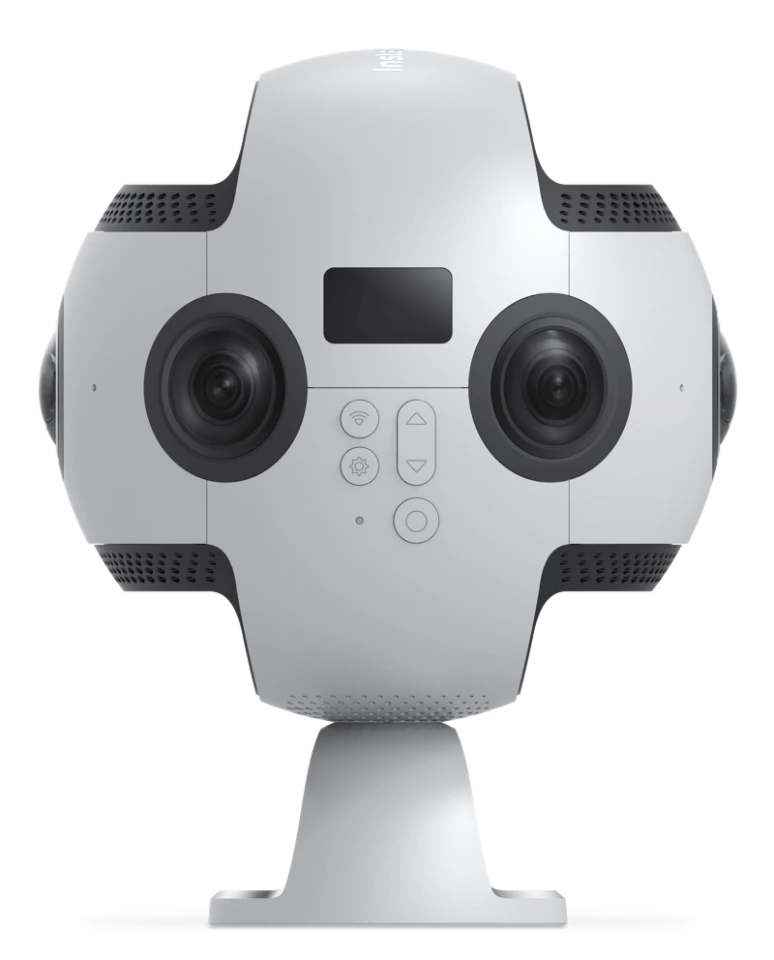
Insta360 Pro for high grade video
The Pro is a standalone ball-shaped aluminum unit with six built-in fisheye cameras, and it's a bit of a beast. Capable of photos AND videos at 7680 x 3840/30 fps, or 8K, as well as real-time streaming at 4K/30 fps, the Pro also uses its multiple camera options to provide 3D stereo vision, either at 4K/25 fps as a live stream, or at 6K/30 fps if you're happy to post-process it.
There's an AUX mic in for external audio, as well as twin built-in mics and a HDMI 2 Type D output for live monitoring. File transfer can be done through Ethernet, USB type C, or a built-in Wi-Fi connection. The removable 5,000-mAh battery lasts some 75 minutes.
Importantly, the Insta360 Pro also features some pretty awesome looking stabilization software that makes a big difference, removing the queasy roll and shake issues that can be a pain in the butt with dynamic moving shots.
Video quality with the six cameras and optical flow stitching is leagues ahead of the two-camera versions, with much cleaner transitions between cameras and greatly improved sharpness, resolution and detail, as well as reduced ghosting.
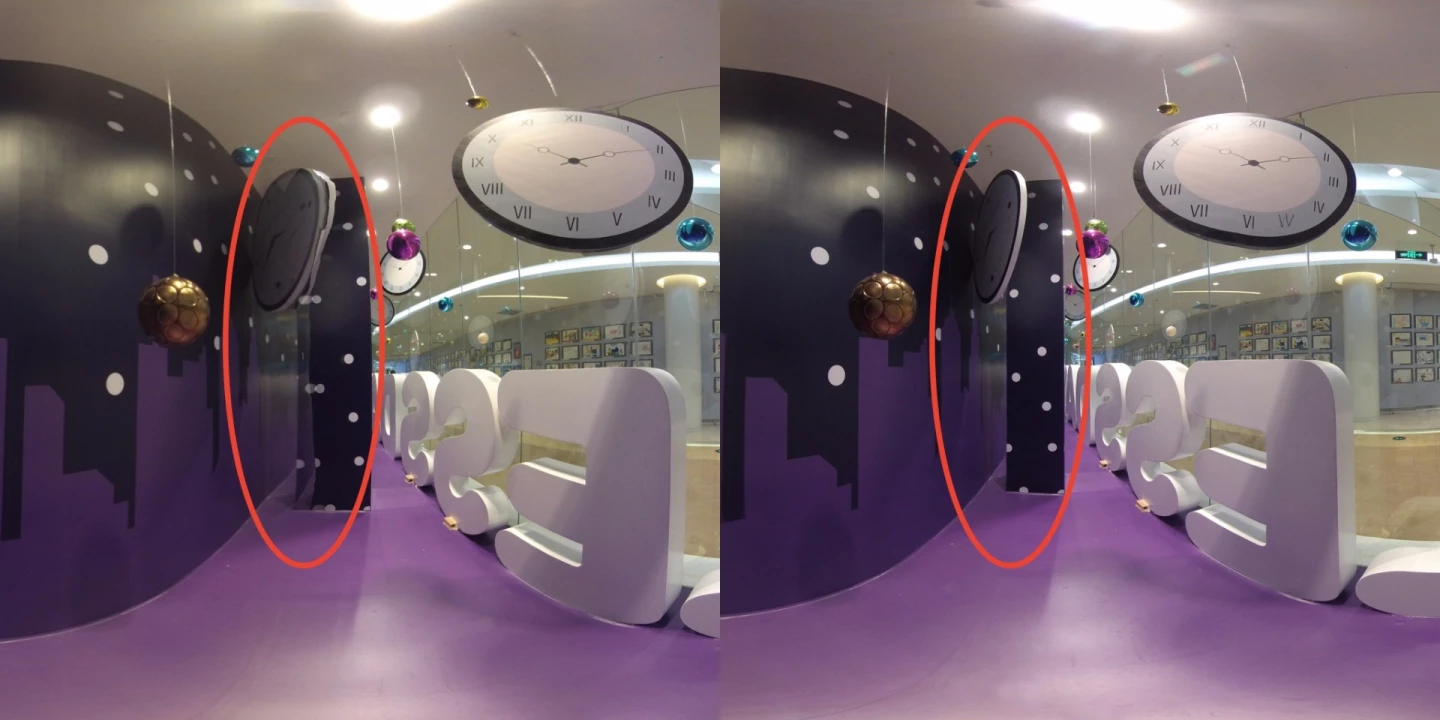
Naturally enough it's a much chunkier gizmo than the others, coming in a palm-sized ball weighing 1.2 kg (2.6 lb). And the asking price of $3,000 will scare off most dabblers, but it seems a quality piece of gear.
The issue remains with 360-degree footage: what can you really do with it? It seems best suited at this stage to long, single shots in which the viewer can spin the camera around, either with a mouse, finger or a headset, to take in views of a particularly spectacular or dynamic situation. It also seems great for real estate tours and simple shots that give you a sense of immersion in a famous or beautiful space.
The wrong kind of editing can make things very confusing, as you can see if you drag around in the video below and try to get a sense of what's going on:
Mind you, the right kind of editing can make for a pretty spectacular showpiece:
Still, even some of the panoramic projections and ultrawide views you can map back onto a non-360 degree video output look really cool, and doubtless there will be filmmakers out there working on how to incorporate this kind of tech into exciting storytelling.
Source: Insta360.
